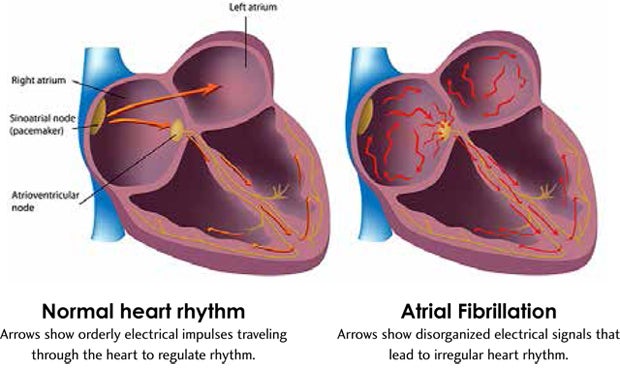Convergent Procedure
There are several treatment options for atrial fibrillation – the most common type of irregular heartbeat. There is a standard endovascular procedure for patients who failed medication that is effective for most AFib patients who have intermittent arrhythmia and a structurally normal heart. Patients with long-standing atrial fibrillation and associated structural heart changes do not respond to standard treatments as well.
That option is called a convergent procedure – a convergence of technology and technique to treat AFib. A convergent procedure involves both an electrophysiologist and a cardiothoracic surgeon.
The surgeon creates a tiny incision in the patient’s abdomen instead of a large chest incision as is the case in open heart surgery That smaller incision means the surgery is minimally invasive, which can result in a shorter stay in the hospital and a faster recovery for the patient. The surgeon then uses radiofrequency ablation (the use of targeted heat to destroy tissue in problem areas of the heart to restore its regular rhythm) to create an area of ablated tissue on the back wall of the left atrium from the outside of the beating heart. The electrophysiologist threads a catheter through to the inside of the heart. Using radiofrequency ablation, the electrophysiologist fills in any remaining gaps from the inside of the heart and tests to confirm that all of its abnormal electrical impulses are eliminated.
Cardiologists continue to monitor the patient’s heart rhythm after the procedure to determine if the patient still needs medication.
